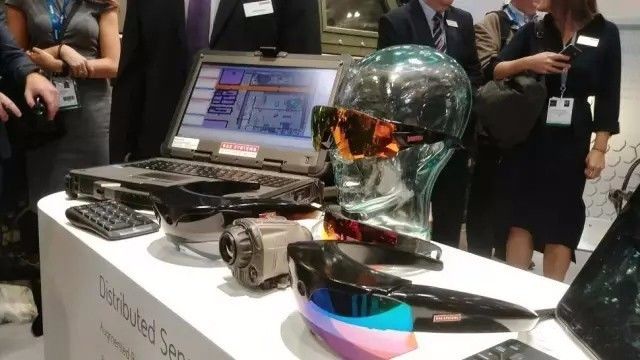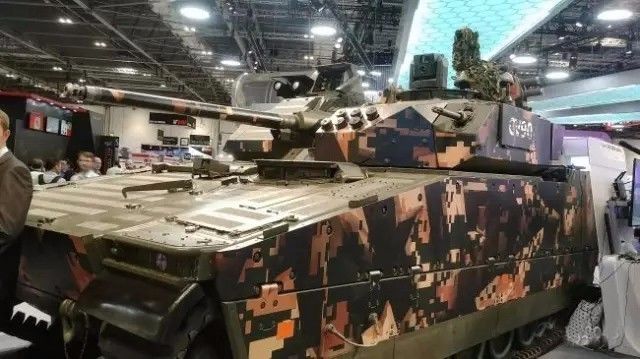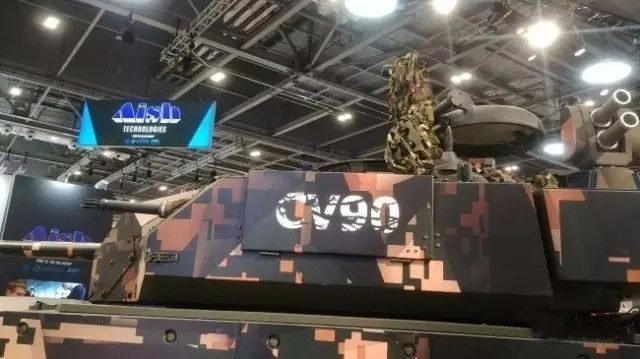
Depending on where your hat is placed, the word "AR battle" may mean something very different. You may also be immersed in the release of the iPhone X, wondering when it will be possible to send your mini army to the Desktop Augmented Reality Zone of The Machines developed by Directive Games.
But if you also participate in the Defense and Security Equipment International 2017 (DSEI) conference held at the Excel Center in London, then these controversial wars and theaters will become more true. Because, when consumers are waiting patiently for Apple's announcement of Apple's AR glasses, augmented reality has been used in the military for many years.
The transparency of the AR glasses allows the wearer to maintain scene and environmental awareness.
Helmet displays were once a must for fighter pilots, but will soon become standard on conventional ground forces. By wearing glasses and helmets, key data points will be overlaid on the battlefield - from mapping information to mission parameters, to defining markers for coalition forces and enemy forces.
Terrain data can be forwarded to troops along with video from remote drones or other troops on the battlefield. Historically, the transparency of AR glasses (as opposed to the full view of a virtual reality helmet) has enabled wearers to maintain awareness of the scene and the environment. Soldiers can see the potential chaos that has occurred around them and take action.
"Glass Tank" and "Source of Threats"
“We can mine a lot of sensor data. We can now perform real-time image processing to a certain extent, and we couldn't imagine it anymore.†“Dan Lindell, platform manager of the CV90 fighter aircraft at BAE Systems Hägglunds, said that he is the most capable military of AR. One of the contractors.

The CV90 is already a very powerful machine. It is a chariot capable of holding eight soldiers. It is also equipped with 30, 35 and 40mm automatic fenders.
However, based on the BAE's 60 years of experience in designing heads up, their aim is to create a "glass tank" through new augmented reality advances - tanks, airplanes, boats or other machines that retain all their defensive capabilities. It is also equipped with sufficient sensors and imaging systems so that internal soldiers can observe external conditions from inside, just as they move in transparent boxes.

If there was once a gunner who had to expose himself to the top of the tank during the reconnaissance in order to operate the machine gun turret, the AR helmet would enable them not only to obtain a 360-degree view of the battlefield from the inside, but also actively self-tracking the battle. People use AI image recognition systems to access a wide range of “threat sources†and screen a wide range of information in order to identify the enemy.
Reduce cognitive burden
As users, the constant buzz of notifications, application alerts, and data points doubles the device's experience pressure - and that these distracting data sources inevitably appear in front of and in the center of vision, and are not aggressive. ?
However, on the military side, Lindell believes that on the contrary, AR equipment can alleviate the "cognitive burden" of soldiers under crossfire conditions.

Lindell said: "There are three major factors in the cognitive burden: choosing too much, taking action requires too much thinking, and it's not clear enough.
"If you add a display with multiple button panels, it will distract the combat personnel. There are also display parameters with resolution that can only provide two-dimensional images. Not all the functions and senses of the human brain - ears, eyes Wait.
Therefore, Lindell believes that the information presented by AR mainly focuses on the decision-making process and reduces the cognitive burden.
"The less things motorists think about achieving goals, the more likely they are to achieve their goals."
Managed, operational data
In situations where life is threatened, letting the computer system replace the soldier with too much thought may be disturbing. If the sensor fails, what would an innocent bystander rather than a real enemy be defined as an invader? But the key factor here is that soldiers can retain the power to act on AR feedback information rather than hand it over to the automation system. At the same time, the AR device can turn data that has been presented on multiple screens into a portable wearable device.

Peder Sjölund, Head of New Technology at BAE Systems Hägglunds, added: “The commander can filter out the information he needs from the battle management system. He can add markers and pinpoint each pixel that represents a key position in the real world.
"By reducing the cognitive burden, we expect to see a drop in stress levels. Automatic target recognition allows soldiers to filter out 90% or more of the useless information and make them feel interesting at that moment."
R&D hardware
Although software solutions have been clearly defined, wearable AR hardware itself is still under development. BAE is demonstrating its CV90 battlefield system using a modified consumer Lumus DK-50 helmet.
There are also two fashionable concept AR glasses (Microsoft's HoloLens and a couple of Oakleys somewhere) that can be tried and equipped with thermal imaging capabilities.

But elements such as on-board power systems are still under development, and display technology still needs improvement - while consumer helmets can provide potential color accuracy at the edges of transparent AR screens, misleading if they use color to distinguish between friends and enemies. The display may lead to catastrophic consequences on the battlefield. In the busy environment of a living room or city street, cameras and sensors can calculate a large number of data points. In a deserted desert or on the high seas, the situation will be different.
Although more advanced wearable prototypes can be tried at the DSEI show, BAE believes that by the end of 2019, the technology will be sufficient to allow commercial products to be launched.
If colors are used to distinguish between friends and enemies, misleading displays can lead to catastrophic consequences on the battlefield.
Sjölund said that AR is very popular in consumer and military applications, so AR will become one of the rare technology areas. Daily users will find in the near future that their hardware may be the same as the hardware of the armed forces. However, if the BAE is to continue to expand, those AR glasses owners may find themselves waiting for another decade.
Whether it is packaged as a peacekeeping tool (BAE also contemplates different software systems such as aviation and other commercial industries, and rescue services such as firefighters), or as a war machine, it may play a role in life-and-death decisions in conflict areas. But it does highlight the versatility of augmented reality applications, so it is considered a revolution in wearable computing.
Oil Filter For ISUZU
ISUZU Oil Filter Replacement,Oil Filter For ISUZU Cars,ISUZU Car Oil Filter,ISUZU Auto Oil Filter
Zhoushan Shenying Filter Manufacture Co., Ltd. , https://www.renkenfilter.com